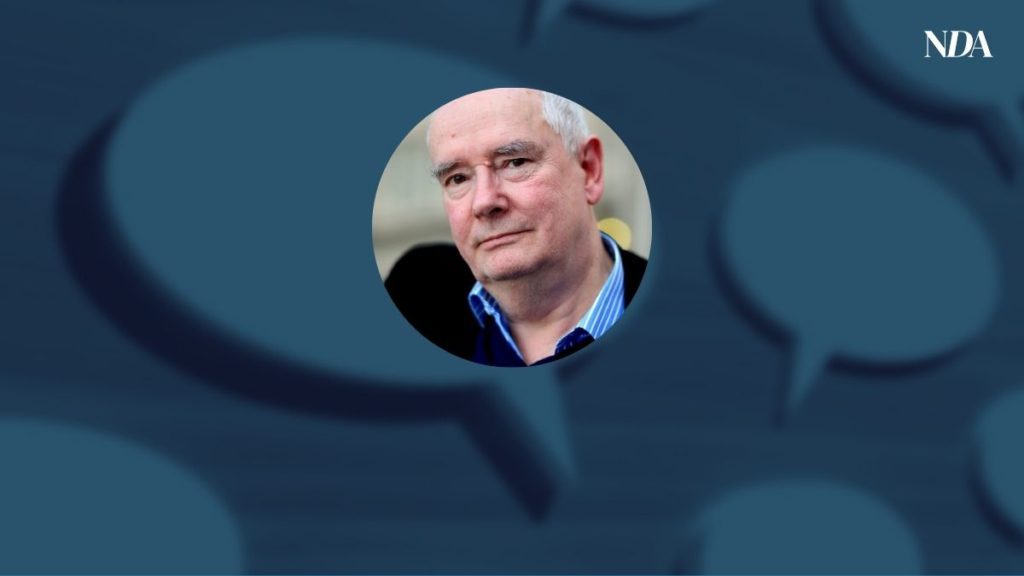By Patrick Collister Executive Creative Director for Ad-Lib.io, Curator of The Caples Awards and Editor of Directory, and NDA’s new columnist.
Almost certainly the sort of rhetorical question to irritate a lot of people in adland.
Yes, I’m being provocative, but provocative for a reason.
I care a lot about advertising. I care for many of the creative people I’ve encountered in the course of my uneven career. And I worry that some of them seem horribly unaware of the truck about to run them over.
So this is me yelling a warning. Advertising is changing, that much is blindingly obvious. But it’s changing in ways not everyone appreciates. Yet.
The good news: adspend is set to increase by 11.2% in 2021 and digital is heading for a 19% hike. Linkedin is full of jobs.
The heads-up news: the jobs aren’t for creatives who can craft a TV commercial or put together an integrated campaign around a big idea.
There has been a reversal. CMOs want small ideas. And a lot of ‘em.
They want ideas in flocks which they can release across the internet.
Not one carefully constructed message but dozens of campaigns around a common theme. Maybe hundreds, each campaign targeted at a specific audience.
For instance. Let’s imagine you’re a condom brand called Oh Yes!
Even before Covid you noticed that there was an increase in sexually transmitted diseases. Now that the pandemic is in retreat (we hope), you want to try to establish protected sex as a new and better normal.
So, you could run a TV campaign and posters looking a bit like this:

Or you could target young, singletons who like cooking. Or you could talk to walkers and ramblers.
Or to people who’ve been searching online for a love film. Or to people who watch cat videos.
Or to any other group you can think of. All at the same time.

As well as display ads, you might want to run dozens (hundreds) of contextualised ads on YouTube.
How about a six-second bumper ad in front of Beyoncé’s All the Single Ladies, you ‘Let’s not go back to unprotected sex. Single ladies don’t like it’?
Because young men watch football more than any other genre on YouTube, six seconds in front of popular football vids saying something like, ‘Let’s not go back to unprotected sex, it’s a game you can only lose.’



While we’re on the subject of targeting, here’s a thing. The most recent data shows that in the UK the largest rise in STIs is in men over 65.
You should definitely be talking to them, oh yes.Let’s not go back to unprotected sex, you old goats.
(And, by the way, whenever anybody says that data has killed creativity I want to scream. No it bloody hasn’t. It throws the door open on amazing insights that almost always inspire ideas.)
Creativity is nothing more and nothing less than solving problems. By whatever means.
And in advertising the means have changed, from telling everybody about a product to talking to somebody about it.
The tech exists to be able to do this. To personalise at scale, across markets and across platforms.
So why is it that 97% of all digital advertising is still untargeted?
It’s because creative shops don’t think it’s their problem. They think their role is to put up tent-poles.
They pursue shares, likes and media impressions. Quite how their big ideas might be bent, reshaped and hammered into place elsewhere in order to drive sales, well… that’s someone else’s job.
Other people are having to step into the breach, whether they want to or not.
HERE is Nicolas Bidon, CEO of Xaxis, a company that transforms “digital media investments into real business outcomes.”
In other words, they improve advertising performance. Except, as he says, their hands are tied.
Creative agencies don’t want to get involved. So Xaxis now has its own creative studio. Bidon calls it “going the extra mile.”
When I interviewed him, Mark Read, CEO of WPP, said: “We spend so much time worrying about programmatic media but we don’t worry about the creative that sits in that media. And that is my challenge to the creative community. We’re buying 64,000 audiences but we only have four pieces of creative work to deliver to them.”
If agencies can’t or won’t deliver the product marketers want and need, we’ll see more media agencies opening design studios and more big brands bringing creativity in-house.
No prizes for guessing who the losers in all this will be.








